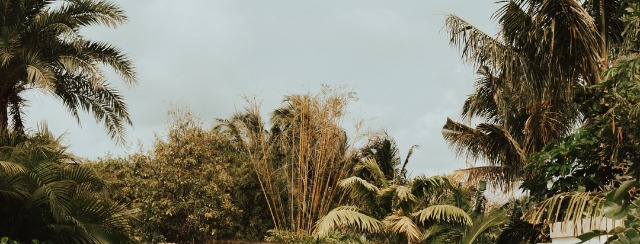Bahamas National Parks Guide
The Bahamas National Parks system features areas of pure aesthetic beauty and a treasure trove of biodiversity —one of the world’s longest underwater cave systems, a large collection of rare palms, and a 250-acre wetland that is home to more than 100 birds species and a critically important sea turtle research facility.
Walker’s Cay National Park is a great nature preserve Walkers Cay, in northwestern the Bahamas. Being miles away from the populated islands and outside the main trade lanes, Walker’s Cay has crystal clear water that will let you see down 100 feet. This allows you to see the variety of fish that swim in the reefs around the cay, including sharks and barracudas, as well as other animals like turtles, sting rays, and eagles in the sky.
Travelers looking to find a another great natural attraction will enjoy exploring places like Pelican Cays National Park. Established in 1972, this land and sea park is comprised of Channel Rock, Gaulding Cay, the southern portion of Sandy Cay as well as their surrounding waters. It is a popular destination among snorkelers because of the great underwater biodiversity, coral reefs, and underwater caves.
Fowl Cays National Park has long been a popular boating destination, but in recent years it has grown into one of the top snorkeling and diving sites around. It is home to biologically rich coral reef systems, sandy bottom habitats, rocky shores, and lush seagrass beds.
National Park on Walkers Cay
Walker’s Cay National Park
South West of Central Walkers Cay
The remote Walker’s Cay National Park features a natural habitat for countless species that call this island home. Walker’s Cay features 3,840 acres of unspoiled land, surrounded by its own barrier reef.
Being miles away from the populated islands and outside the main trade lanes, Walker’s Cay has crystal clear water that will let you see down 100 feet. This allows you to see the variety of fish that swim in the reefs around the cay, including sharks and barracudas, as well as other animals like turtles, sting rays, and eagles in the sky.
Set on the island of Walkers Cay, Walker’s Cay National Park happily welcomes residents and visitors rooming on this part of the island or close by. Regardless of whether or not you’re staying nearby, you are free to drop by to check out the sights. In case you’re wondering, Port Lucaya is 53 and a half miles (86 and a half kilometers) to the south.
National Park on Great Abaco
Pelican Cays National Park
1.3 mi. South of Central Channel Cay
Established in 1972, this land and sea park is comprised of Channel Rock, Gaulding Cay, the southern portion of Sandy Cay as well as their surrounding waters. It is a popular destination among snorkelers because of the great underwater biodiversity, coral reefs, and underwater caves.
Over 177 species of land and sea life have bee documented within the park, including Green and Loggerhead turtles and Bridled Terns.
Located on the island of Great Abaco, 1.3 miles south of Channel Cay, Pelican Cays National Park always welcomes travelers rooming on this part of the island. Whether or not you’re staying nearby, you should consider stopping by to enjoy a great time. It is 10.1 miles south of Hopetown.
Nearby Attractions
Other types of nearby activities include Tiloo National Park, which is four miles away Tilloo Cay. You might also want to consider heading to Byrle Patterson Memorial Garden, which is another attraction nearby.
Black Sound Cay
Black Sound Cay is the winter home of many waterfowl, and is an important part of the area’s ecosystem. While there is not much to hike on this island, it is great for sightseeing and bird watching.
Black sound Cay is not a major tourist attraction. Instead it really just serves as a protected area for wildlife. Birdwatchers and photographers will find plenty here, but not many other people will.
Black Sound Cay is found on the northern edge of the island of Great Abaco, near Crab Cay; it is to the northwest of Marsh Harbour.
National Park on Fowl Cay
Fowl Cays National Park
6.5 mi. North of Central Marsh Harbour
Established in 2009, this is one of the newer national parks in the region. The reserve measures in at 3,200 acres or 3.6 sq miles, featuring a colorful barrier reef.
Fowl Cays has long been a popular boating destination, but in recent years it has grown into one of the top snorkeling and diving sites around. It is home to biologically rich coral reef systems, sandy bottom habitats, rocky shores, and lush seagrass beds. Both elk horn and stag horn coral dwell here in numbers. If you like to cave dive, you will be happy to discover that many undersea caves are found here. Because of these features, this area is a frequent scuba and snorkeling spot. Many sightseeing tours visit the park as well.
Positioned near the center of the island of Fowl Cay, Fowl Cays National Park invites local residents and vacationers who are rooming on this part of the island or nearby. However, even if you aren’t staying in the vicinity, you are free to drop by to enjoy a great time. From this location, Marsh Harbour is six and a half miles (ten and a half kilometers) to the south.
Nearby Attractions
Other types of nearby activities include Maxi Caves, which is within traveling range on Great Abaco. You might want to also consider heading to Hopetown Lighthouse, which is another attraction in the area.
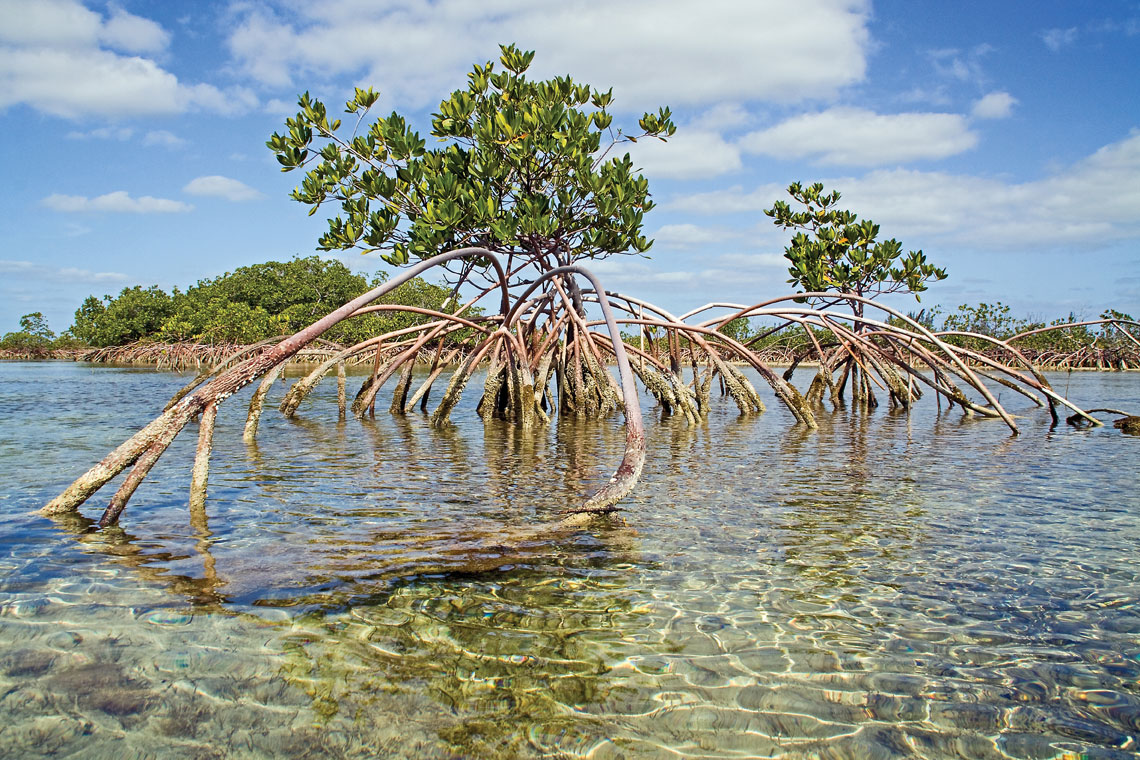
National Park on New Providence
Primeval Forest National Park
Also established in 2002 was the Primeval Forest National Park, a 3 acre are that makes you feel as though you have stepped back in time. This remarkably untouched area gives you a glimpse at what the older evergreen hardwood forest of the Bahamas used to be like. The national forest is located in the south-west corner of the Island. Primeval Forest National Park also has amazing unique limestone sinkholes or caverns up to 50′ long and 30′ wide. Other locations with similar caverns have been found to have amazing Bahamian Fauna’s within them. As time passes there are hopes that Primeval Forest National Park will contain the same. Be sure to visit this little hidden treasure when you visit New Providence next.
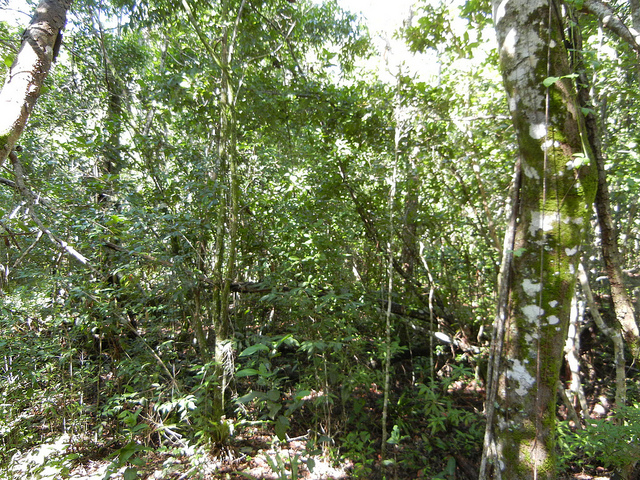
The Retreat
The Retreat is an 11 acre garden of rare and exotic palms and native woodland preservation that was established in 1977. Today it is home to one of the world’s largest private collections of Palm. The retreat is also home to The Bahamas National Trust. The Retreat offers guided or self-guided tours and a small fee to enter. Guided tours are available by appointment only, so be sure to call ahead if you are planning a trip here. The Retreat is located a few miles east of downtown Nassau.
Grand Bahamas National Parks
There are three national parks on Grand Bahama Island. Lucayan National Park, the star of the triad, is the only place in the Bahamas where visitors can see all six of the island’s ecosystems – a collection of plants and wildlife that offers an unparalleled view into the complex interaction of native land and sea. Also within the park is one of the world’s longest underwater cave systems – a sprawling network of tunnels resulting from the island’s unique limestone geology. The Rand Nature Center, with its resident flamingo colony, and reef-enveloped Peterson Cay National Park are equally thrilling in their beauty.
Lucayan National Park
Lacayan National Park lies on Grand Bahama Island, 2.2 miles east of Freetown; it’s 16.1 miles to the east-northeast of Port Lucaya.
Lucayan National Park was established in 1977 and located just east of Freeport, Grand Bahama. Lucayan National Park is a 40-acre park that is home to one of the longest underwater cave systems in the world. It includes over 6 miles of caves and tunnels that have been already charted. Amazingly the park contains five separate ecological zones stretching from eh south shore to the pineyard. Part of the cave system is only accessible by divers and part has stairs to it. If you are revisiting Grand Bahamas then be sure to add this park to your list!
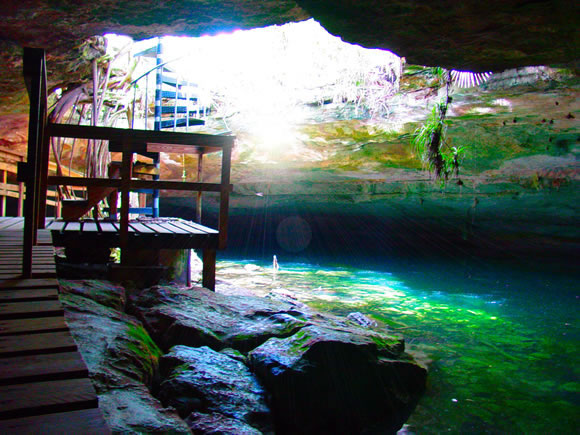
Below ground at Lacayan National Park lies one of the largest underwater cave systems in the world. Over six miles of caves and tunnels have been charted, and there is still work left to do. Guests spend time above ground, however, browsing exhibits that touch on every vegetative zone found in the Bahamas.
Nearby Attractions
Travelers who enjoy nature preserves, and have the energy to view some others, might consider seeing Patterson Cay and Peterson Cay National Park; the first and closest of which is eight and a half miles to the west-southwest of Lacayan National Park. Other local attractions include Garden of the Groves, which is 11 and a half miles away Garden of the Groves. You might also want to think about checking out Grand Bahama Labyrinth, which is another attraction in the area.
Peterson Cay National Park
3.1 mi. East of Central Garden of the Groves
Established in 1968 is Peterson Cay, National Park. This amazing 1.5-acre cay is the only leeward cay of all the Bahama Islands. Its amazing location makes it one of the primer locations for snorkeling just off the coast of Grand Bahama Island. This is one of the smallest national parks in the Bahamas but it one of the most popular ones. Access to this park is by boat only so plan your kayaking or boat trip here on your next vacation.
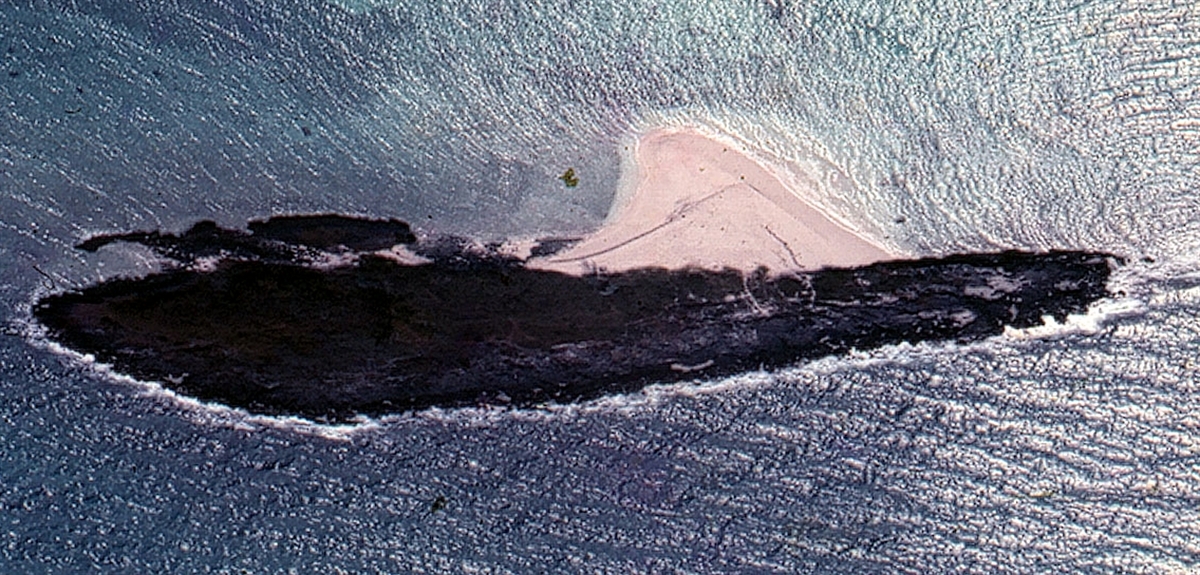
BNT Rand Nature Centre
West Settler’s Way, Freeport, Grand Bahama Island
Tourists in the Bahamas will not want to miss a chance to explore the BNT Rand Nature Centre, a calming and peaceful depiction of the natural side of the island nation. The BNT Rand Nature Centre is composed of 100 acres of trails for guests to explore.
Positioned in the northern section of Freeport, BNT Rand Nature Centre always welcomes travelers who are rooming in this part of the city or in the surrounding area. Even if you aren’t staying particularly close, you are free to stop by to enjoy a great time.
Nearby Attractions
There are some other places of interest nearby, including Science Museum, which is one and a quarter miles away downtown Freeport. You might want to also think about making the trip to Grand Bahama Museum, which is another attraction in the vicinity.
Harrold and Wilson Ponds National Parks
Harrold and Wilson Ponds National Parks were established in 2002 as well as Bonefish Pond. The two ponds together are home to over 100 avian species and 250 Acres. Harrold and Wilson Ponds are located on the central south side of the Island. Just minutes from the nation’s capital this is a great way to get a closer look at Bahamas’ ecotourism side and enjoy the island’s largest concentration of herons, egrets, ibises, and cormorants. There are many platforms and boardwalks so you can view the amazing birds from many different angles here, so be sure to plan a day to spend here on your next Nassau visit.
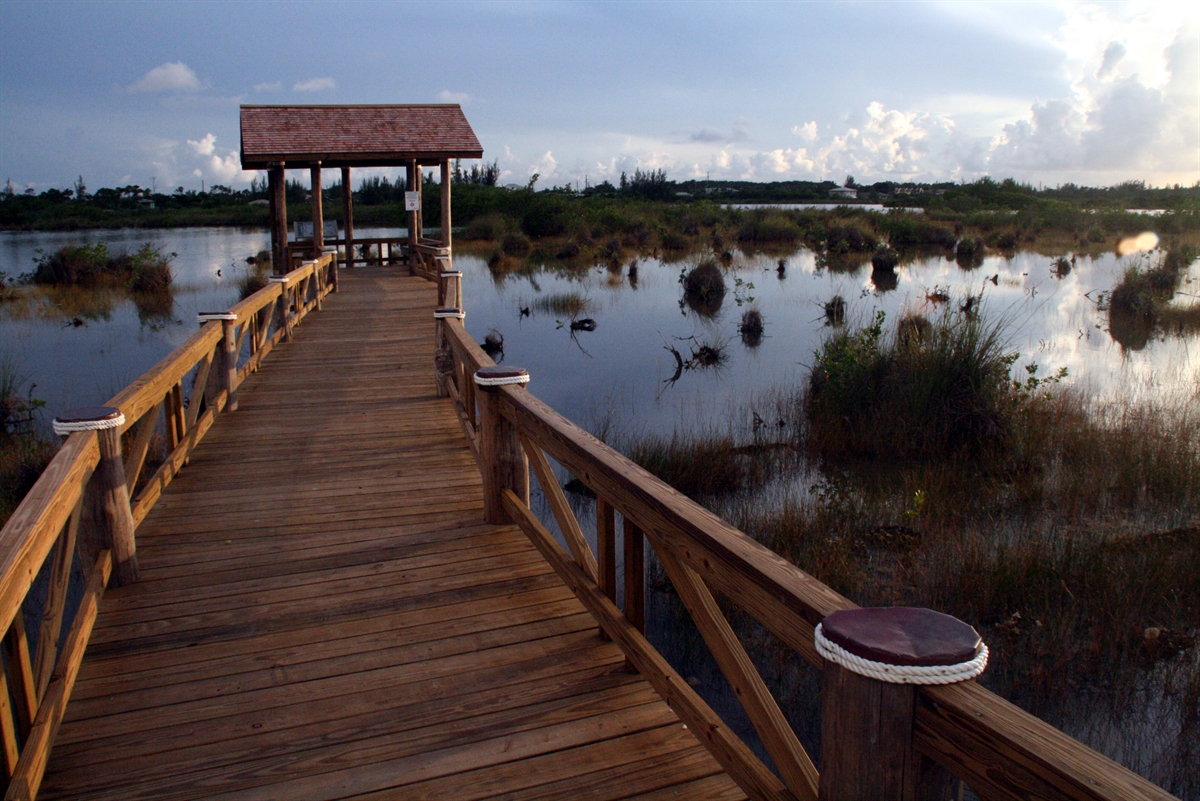
Bonefish Pond
Bonefish Pond is 1280 acres of the coastal mangrove wetland area that was established in 2002. They offer snorkeling tours to allow teachers and students alike a chance to see, experience and learn about the different life in Bone Fish Pond. Bonefish Pond is located on the center south side of the island and one of the few wilderness areas left on the Island. One of the best features of Bonefish Pond is the 600′ viewing platform and boardwalk. This is quickly growing in popularity and becoming a new snorkeling and kayaking hotspot.
North Andros Island
Andros Barrier Reef National Park
The Andros Barrier Reef National Park is a protected reef that also happens to be one of the longest in the world. The park today serves as an important breeding ground for countless fish that populate the area.
The national park is mainly used as a dive site where divers can take the plunge and explore the reefs that can be found beneath the water. While below, you will also be able to spot all the tropical fish that call the reefs home, using them as protection from rough waters and larger predators.
Andros Barrier Reef National Park can be found on the southeastern side of North Andros Island; it is to the south of Andros Town.
As the park is underwater, you will need a boat to reach it.
Crab Replenishment National Park
Considered to be the top crab park in the Bahamas, Crab Replenishment National Park is the spot for crab lovers to explore. Crab Replenishment National Park lies on North Andros Island, 28.2 miles south west of Clifton Bay; it is three and a half miles (five and a half kilometers) to the south of Andros Town.
Crab Replenishment National Park is a beautiful natural attraction, which you’ll find in a secluded area, removed from most popular tourist attractions.
Blue Holes National Park
One of Mother Nature’s more unique creations has its home on the island of Andros in the Bahamas — more than once. In fact, this island has the highest concentration of Blue Holes in the world. The Blue Holes National Park protects these holes and the creatures that inhabit them.
Set on the eastern part of North Andros Island, Blue Holes National Park happily welcomes travelers who are lodging on this part of the island or nearby. But even if you aren’t staying nearby, you should think about stopping by to enjoy a great time. Andros Town is nine and a half miles (15 and a half kilometers) to the east-southeast.
This nature preserve is positioned pleasantly located without most hotels and tourist attractions, in a remote spot.
National Parks on Inagua
Inagua National Park
3.8 mi. South of Central Great Inagua
Bird watchers will not want to pass up a chance to explore Great Inagua Island, home of Inagua National Park — otherwise known as the largest breeding colony in the world of West Indian Flamingos. Great Inagua Island spans 287 square miles and features a varies topography that birds love.
Not only is Inagua Island home to more than 50 thousand West Indian Flamingos, but a myriad of other bird species including Tri-colored Herons, Great Egrets, Brown Pelicans, and West Indian Whistling Ducks reside here.
Inagua National Park is pleasantly removed from most hotels and tourist attractions, in a remote area.
Union Creek National Park
15.9 mi. Northeast of Central Matthew Town
Already a popular spot for birdwatching, Great Inagua Island is home to Union Creek National Park, an important research center focusing on turtles. Union Creek National Park lies near the middle of the island of Inagua, near Matthew Town.
Visitors will find this nature preserve in a quiet, remote area – without most hotels and other tourist attractions.
